Introduction
Budget vs Actual Variance Analysis stands as a cornerstone of effective financial management, enabling organizations to compare their budgeted expectations against actual performance. This crucial method not only highlights discrepancies but also provides actionable insights into areas that require immediate attention or improvement. As the famous saying goes, "Everyone has a plan, until they get punched in the mouth."
Similarly, budgets need continuous monitoring and adjustment to stay relevant and effective in the face of market dynamics and economic shifts.
In an ever-changing business environment, where unexpected events like the COVID-19 pandemic or supply chain disruptions can significantly impact operations, variance analysis becomes indispensable. By regularly comparing actuals to forecasts, CFOs can make data-driven decisions that align with their long-term goals. Employing various budgeting methodologies, such as dynamic models and integrated business planning (IBP), enhances flexibility and keeps the organization on track.
Companies excelling in variance analysis are better positioned to optimize operations and enhance customer experience. For instance, focusing initially on optimizing sales before penetrating deeper into the customer base ensures a sequential and effective implementation of strategic initiatives. This comprehensive approach helps organizations not just survive but thrive, turning financial discrepancies into opportunities for growth and improvement.
What is Budget vs Actual Variance Analysis?
'Budget vs Actual Variance Analysis is a monetary assessment method used to compare a company's budgeted figures against its actual performance.'. This examination is crucial for identifying discrepancies between planned and actual financial outcomes, offering insights into areas requiring attention or improvement. As Mike Tyson famously said, 'Everyone has a plan, until they get punched in the mouth.' A budget isn't a one-time exercise; it needs to be periodically monitored and adjusted to ensure the company is on the right path.
A thorough examination of discrepancies enables organizations to adjust to market changes and economic fluctuations. For instance, during the unpredictable year of 2022, factors such as the COVID-19 pandemic, supply chain breakdowns, and rising inflation significantly impacted businesses. According to Vena's 2022 Industry Benchmark Report, these disruptions highlighted the importance of being prepared for unforeseen challenges.
Efficient examination of differences also aids strategic initiatives. By regularly comparing actuals to forecasts, CFOs can make data-driven decisions that align with long-term business goals. This process involves leveraging various budgeting methodologies, such as dynamic models and integrated business planning (IBP), to create a flexible yet structured financial plan.
In practice, companies that excel in discrepancy analysis are better positioned to optimize their operations and enhance customer experience. For example, a business might first focus on optimizing sales and then on penetrating its customer base. This sequential approach ensures that each strategic path is effectively implemented, leading to sustained growth and success.
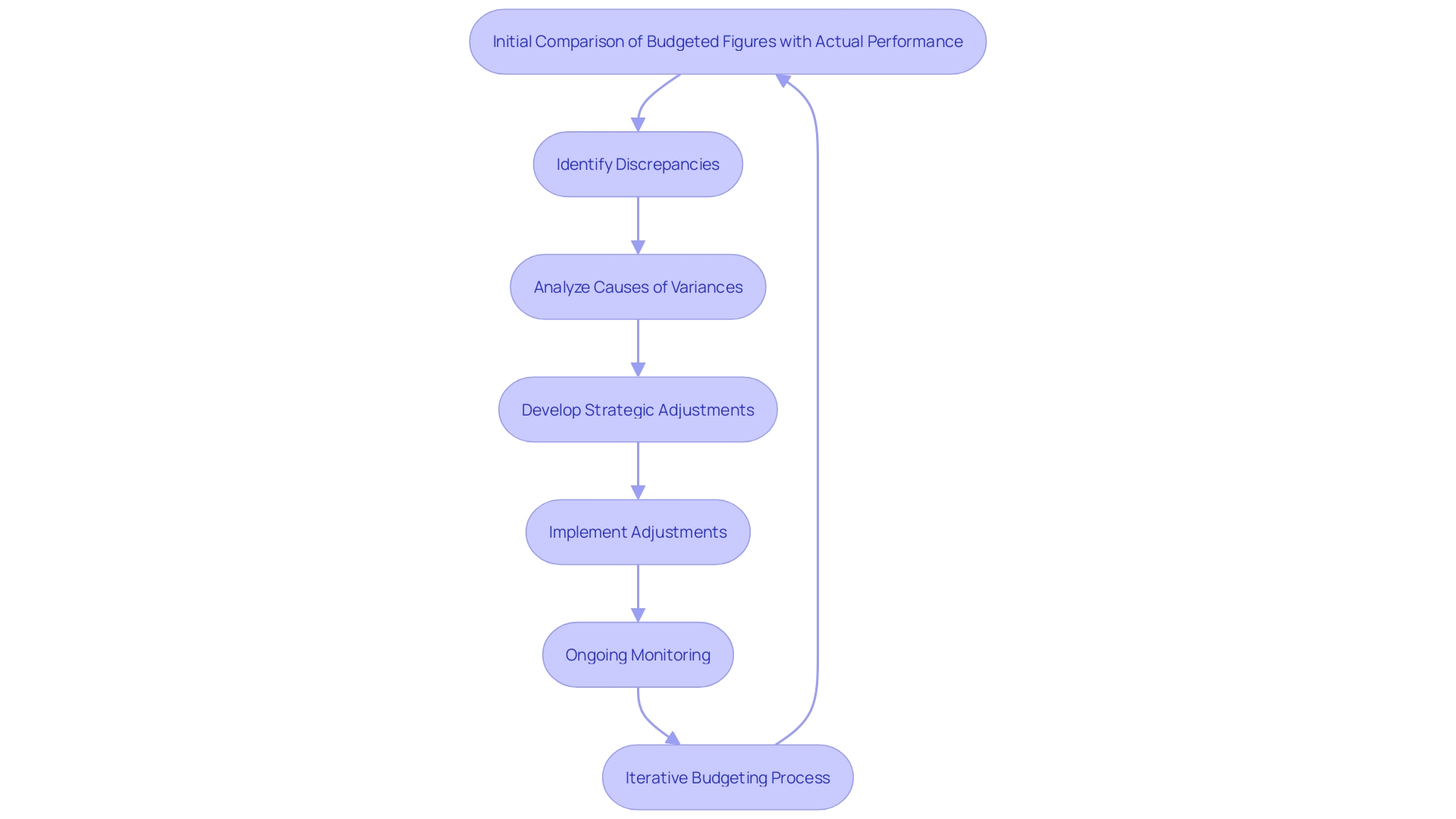
Types of Budget Variances
Budget discrepancies can be classified into two primary types: favorable and unfavorable. Positive differences arise when actual revenues exceed budgeted figures or when actual expenses are lower than expected. This indicates that the organization is performing better than expected. Conversely, unfavorable discrepancies occur when actual revenues do not meet expectations or when expenses surpass the planned amounts. This indicates possible monetary issues that require immediate attention. Regular monitoring and adjustment of budgets are crucial to ensure that the company remains on the right track.
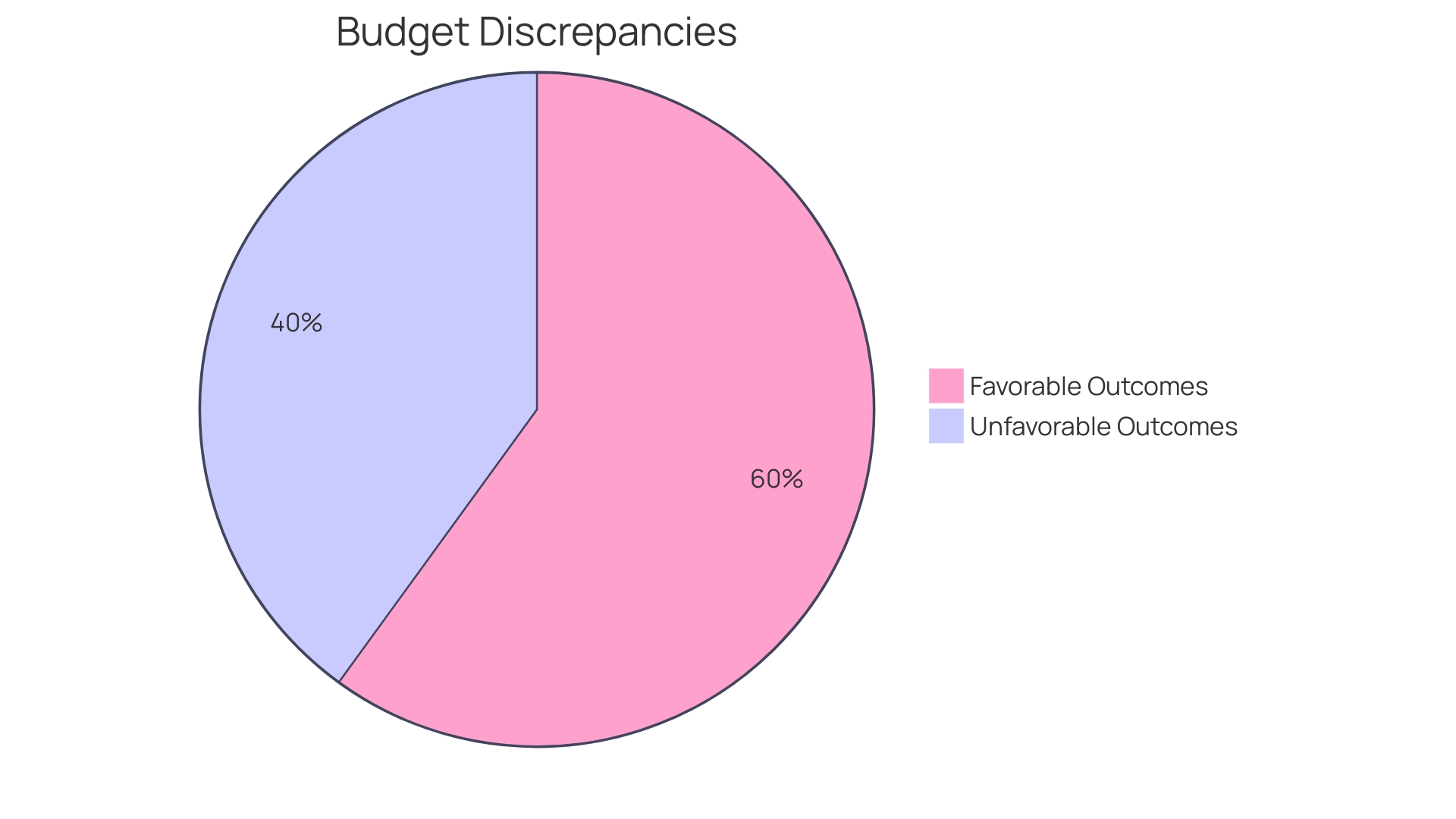
Calculating Budget Variances
To assess economic performance precisely, determining budget differences is essential. The formula is straightforward: Variance = Actual Amount - Budgeted Amount. This method can be applied across various metrics, such as revenue, expenses, and profit margins, offering a comprehensive view of financial health.
For instance, revenue differences can highlight discrepancies between expected and actual sales, which can inform marketing and sales strategies. 'Expense discrepancies, on the other hand, can pinpoint areas of overspending or cost-saving opportunities, aiding in better resource allocation.'.
Furthermore, grasping profit margin differences can offer perspectives on operational effectiveness and profitability. As stated by Gartner, organizations employing thorough deviation analysis frequently attain improved economic results because of their capacity to adjust and react to monetary discrepancies rapidly. Thus, by regularly performing these calculations, organizations can maintain tighter control over their financial operations, ensuring alignment with their strategic goals.

Analyzing and Interpreting Variance Results
Once differences are calculated, the next step is to analyze and interpret the results. This entails evaluating the reasons behind notable discrepancies, taking into account both internal elements, like operational inefficiencies, and external influences, such as market changes. Understanding the root causes enables CFOs to develop targeted strategies for improvement and communicate findings effectively to stakeholders. Consistent performance reporting is pivotal in this process, as it bridges the gap among various departments, guiding them in tracking revenue and expense targets. By supplying monthly Budget vs. Actual reports, FP&A teams can work together with department leaders to tackle discrepancies and proactively modify strategies. This is essential as adverse discrepancies might arise from market conditions or competitor actions. Furthermore, thorough operational assessments and balance sheet evaluations provide glimpses of a company's financial well-being, facilitating informed resource distribution and scenario evaluation. As one expert noted, understanding market volatility is essential for shaping investment landscapes and influencing trading strategies. With the BFSI sector increasingly embracing Big Data technologies, there is a growing emphasis on predictive analytics to solve complex business problems and improve performance, ensuring CFOs can make informed decisions amidst uncertain economic conditions.
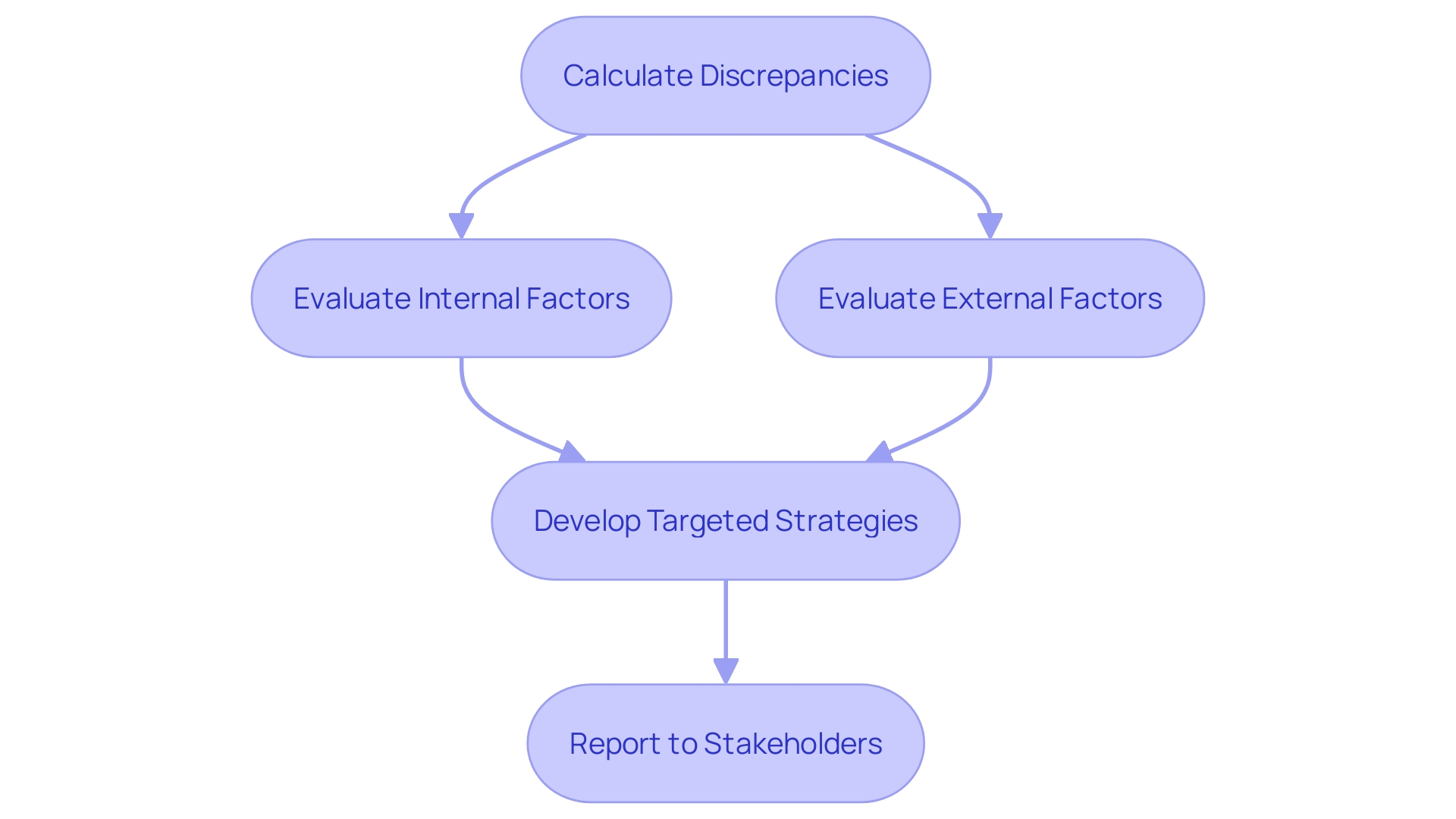
Taking Corrective Actions Based on Variance Analysis
Corrective measures play a crucial role in addressing unfavorable discrepancies and leveraging favorable ones. These actions might include revising budgets, reallocating resources, or implementing cost-control measures. For instance, if a detailed review reveals that certain products are underperforming, the entity can decide to either discontinue these products or find ways to boost their sales. Creating a clear strategy grounded in discrepancy evaluation guarantees that organizations stay adaptable and reactive to monetary challenges. This proactive approach not only stabilizes the company's financial health but also enhances its ability to adapt to evolving market conditions.
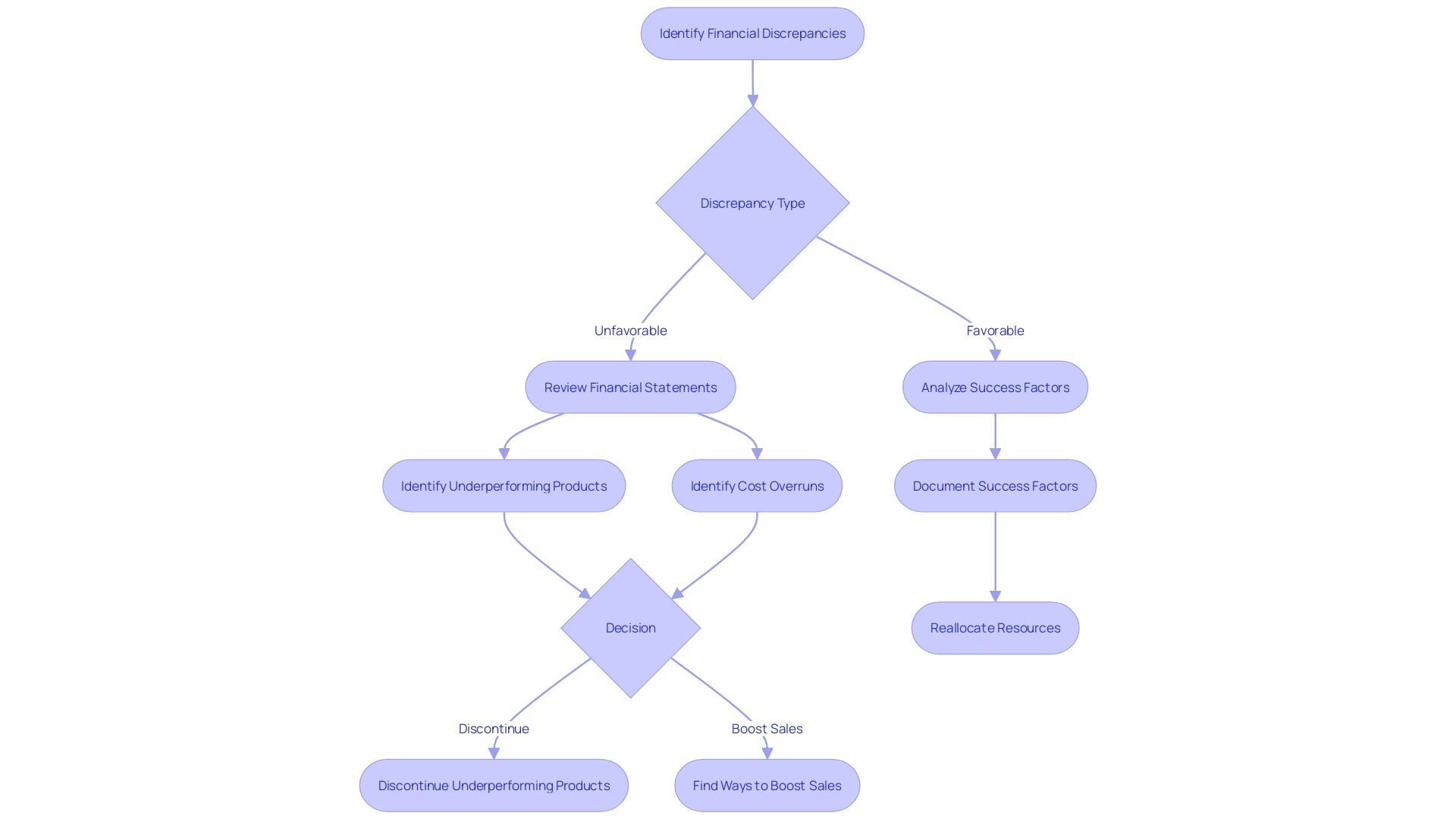
Best Practices for Budget vs Actual Variance Analysis
To maximize the effectiveness of analysis of differences, it's crucial to adopt comprehensive best practices. Consistently examining differences guarantees prompt recognition of inconsistencies and encourages proactive administration. Involving cross-departmental teams in discussions enhances the accuracy of insights, as diverse perspectives contribute to a more holistic understanding of variances. 'Technology plays a crucial role in this process; utilizing advanced tools for real-time data examination can significantly enhance responsiveness and decision-making.'.
Moreover, fostering a culture of accountability across all departments is essential. When each team understands their role in achieving financial targets, it creates a sense of ownership and alignment with organizational goals. For instance, the City of Thunder Bay effectively communicated its Asset Management Plan and Future-Ready Roadmap to staff and citizens, underscoring the importance of retaining knowledge and expertise. This approach not only improved city services but also highlighted the value of cross-departmental collaboration and accountability.
'In the domain of data examination, maintaining data integrity and ensuring reproducibility are fundamental.'. As echoed by experts, “Best practices in data analysis enhance reproducibility, improve data integrity, and ensure correct interpretation.” This structured approach minimizes errors and avoids common pitfalls, leading to more reliable insights.
Furthermore, the integration of data governance frameworks throughout the entity can streamline data management and decision-making processes. Collaborative efforts in designing these frameworks ensure efficiency and effectiveness, as evidenced by successful implementations in various organizations. The Capital One case, where a collaborative approach to technology rollout involved diverse stakeholders, exemplifies the positive impact of such practices.
Finally, keeping abreast of the latest analytics and data science developments, such as Alteryx’s acquisition by Clearlake and Insight Partners, highlights the importance of staying informed about industry trends. This knowledge can inform strategic decisions and ensure that your variance analysis practices remain cutting-edge and effective.
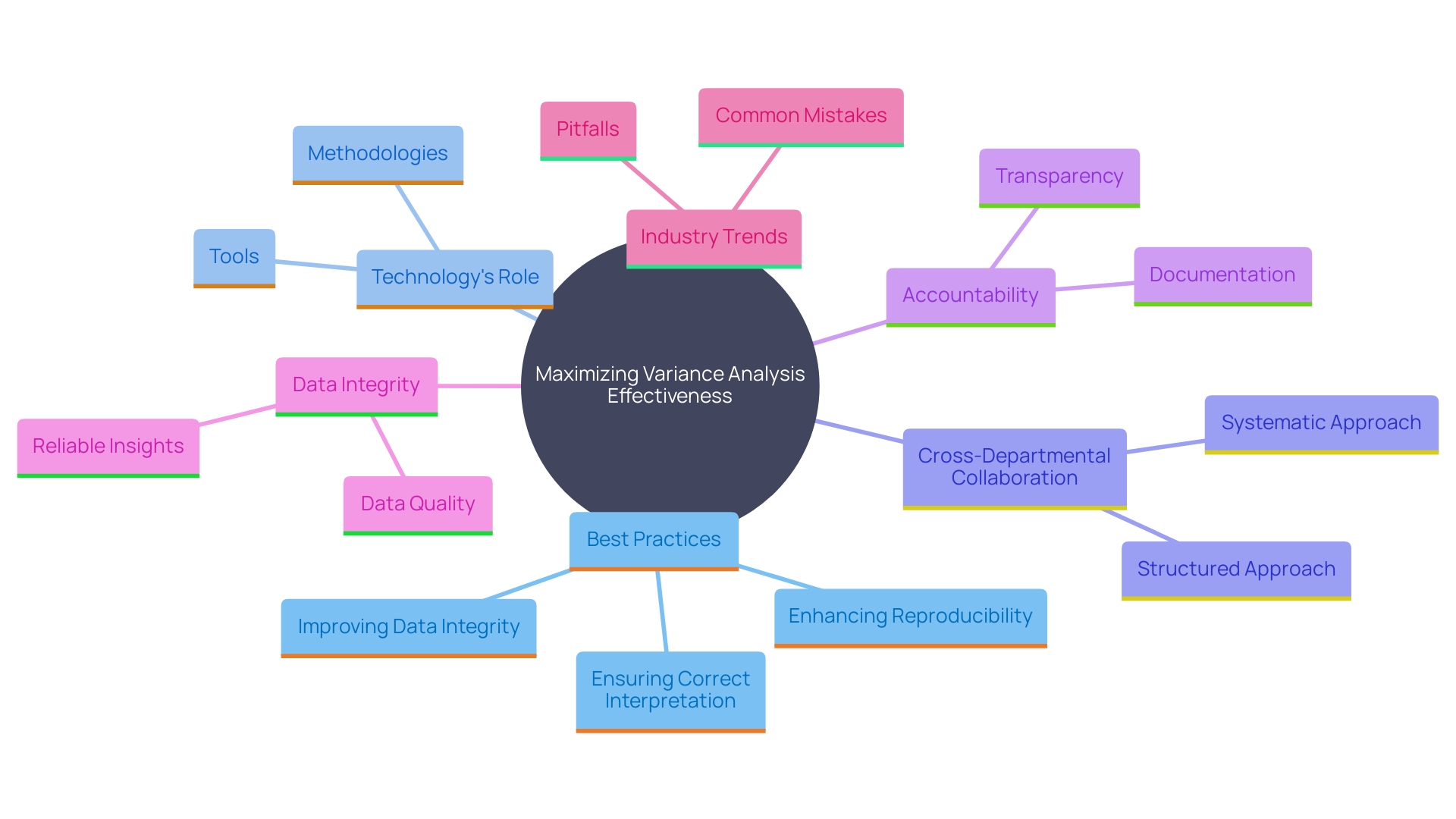
Conclusion
Budget vs Actual Variance Analysis is an essential tool for organizations aiming to maintain financial health and strategic alignment. By comparing budgeted figures with actual performance, companies can identify discrepancies that signal areas needing improvement. This ongoing process allows for timely adjustments in response to market dynamics, ensuring that organizations remain agile in the face of unforeseen challenges, such as economic disruptions or shifts in consumer behavior.
Understanding the different types of variances—favorable and unfavorable—provides a clearer picture of financial performance. Calculating these variances accurately allows CFOs to pinpoint issues, enabling informed decisions that enhance operational efficiency. Analyzing and interpreting the results of variance analysis further empowers organizations to develop targeted strategies, ensuring that corrective actions are not only reactive but also proactive.
Implementing best practices in variance analysis, such as regular reviews and cross-departmental collaboration, fosters a culture of accountability and responsiveness. Leveraging technology for real-time data analysis enhances decision-making, while maintaining data integrity ensures that insights are reliable. By staying informed about industry trends and adopting innovative analytics practices, organizations can optimize their financial management processes, turning variances into opportunities for growth and improvement.




